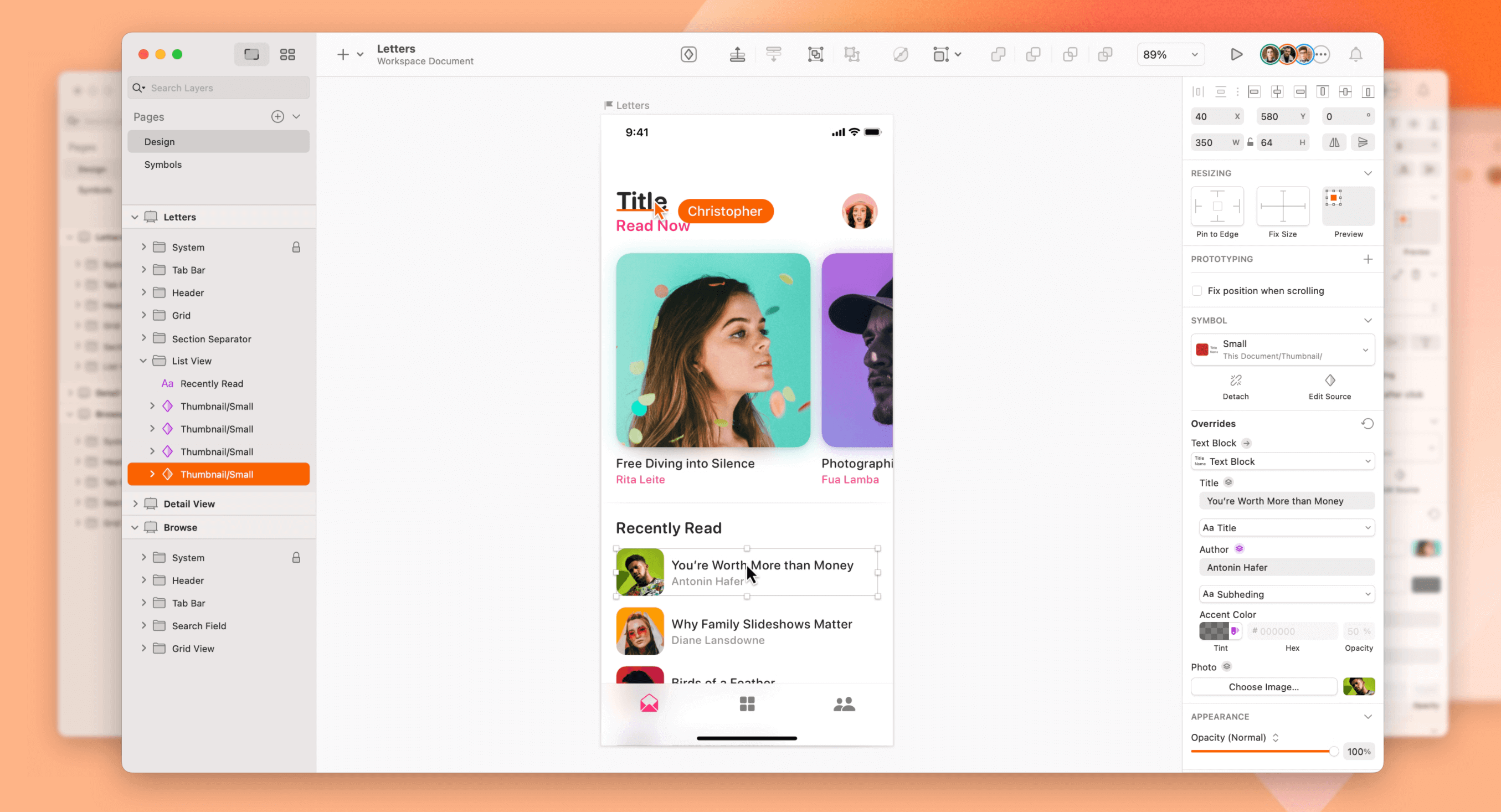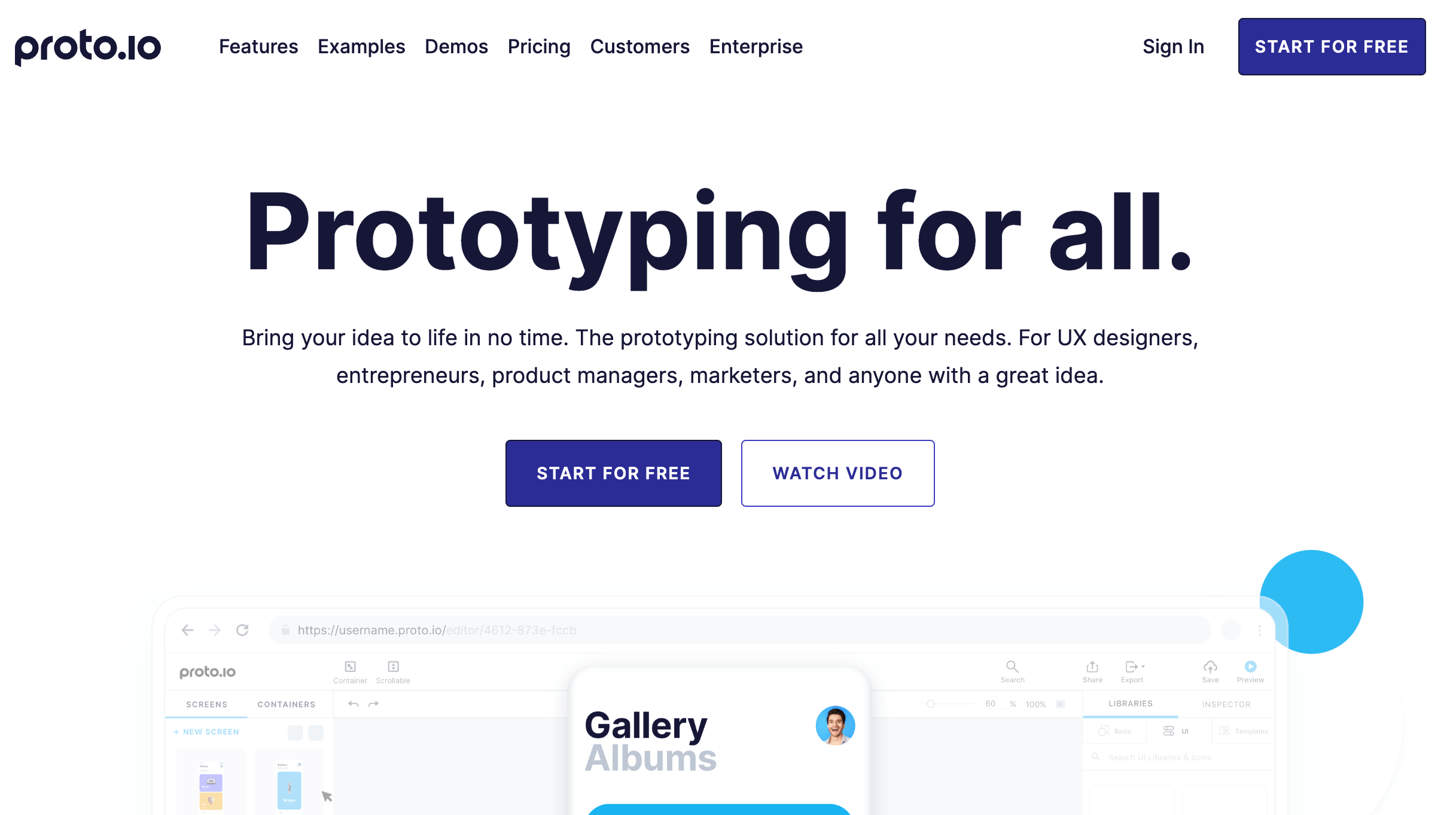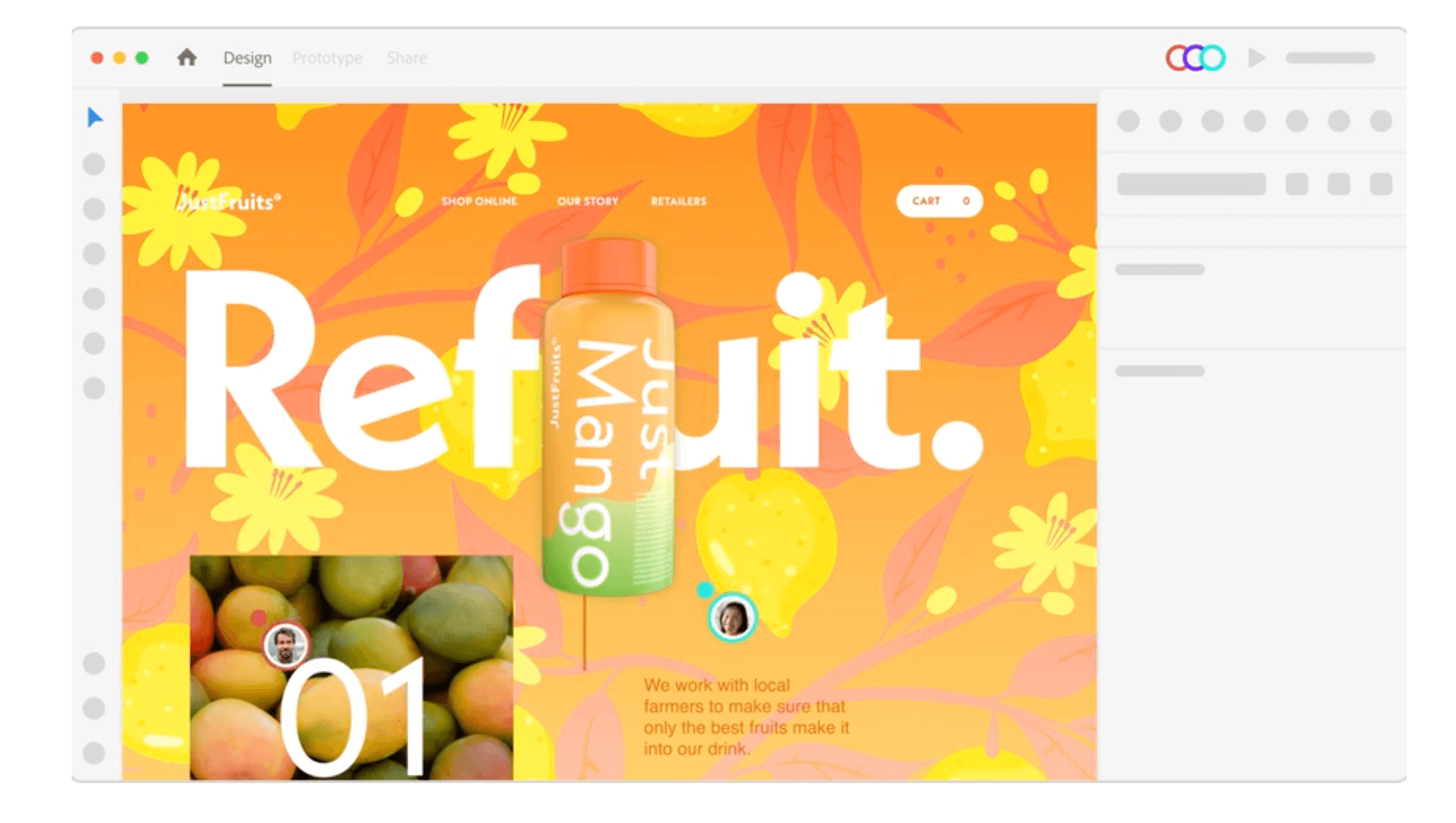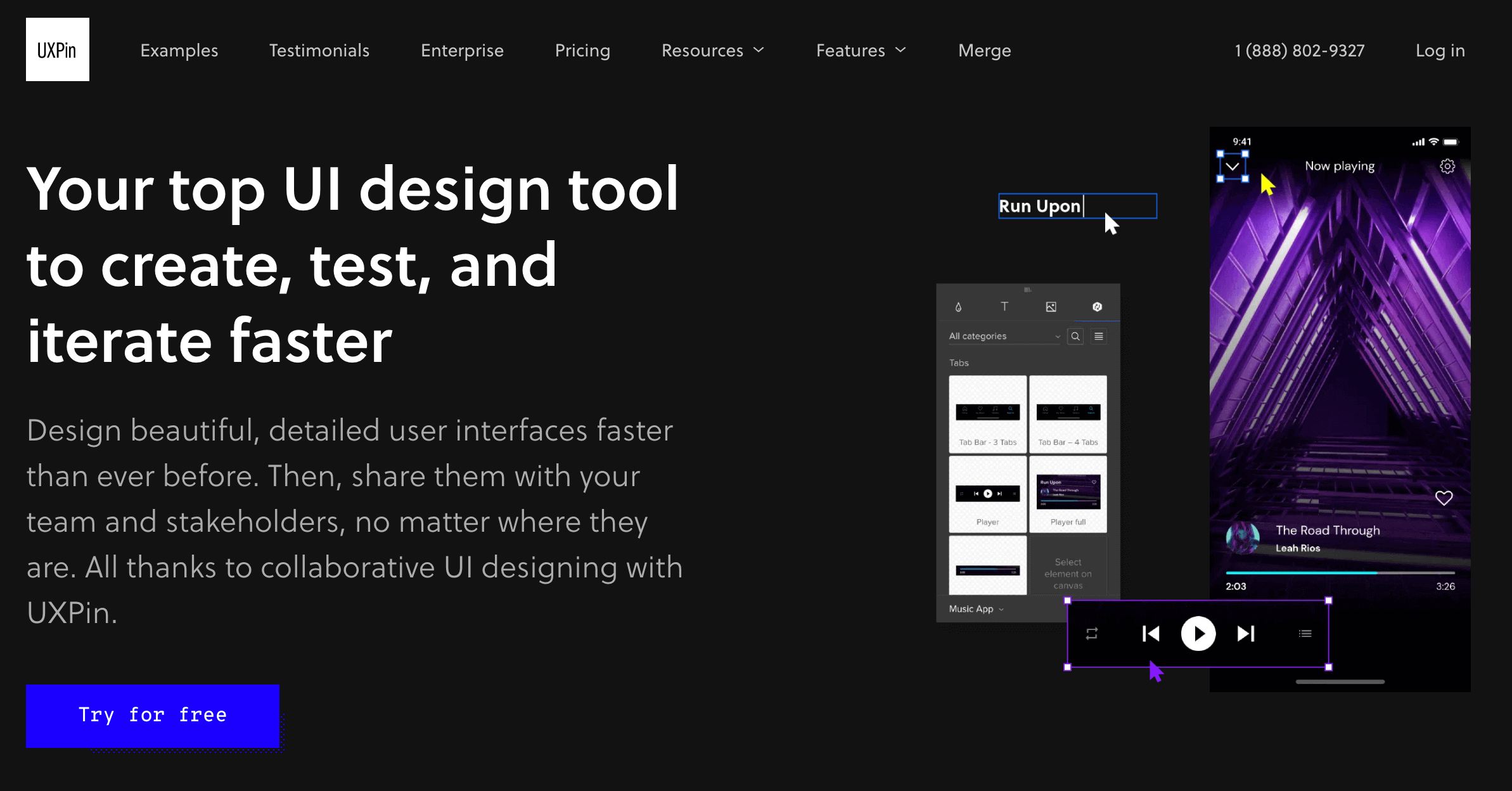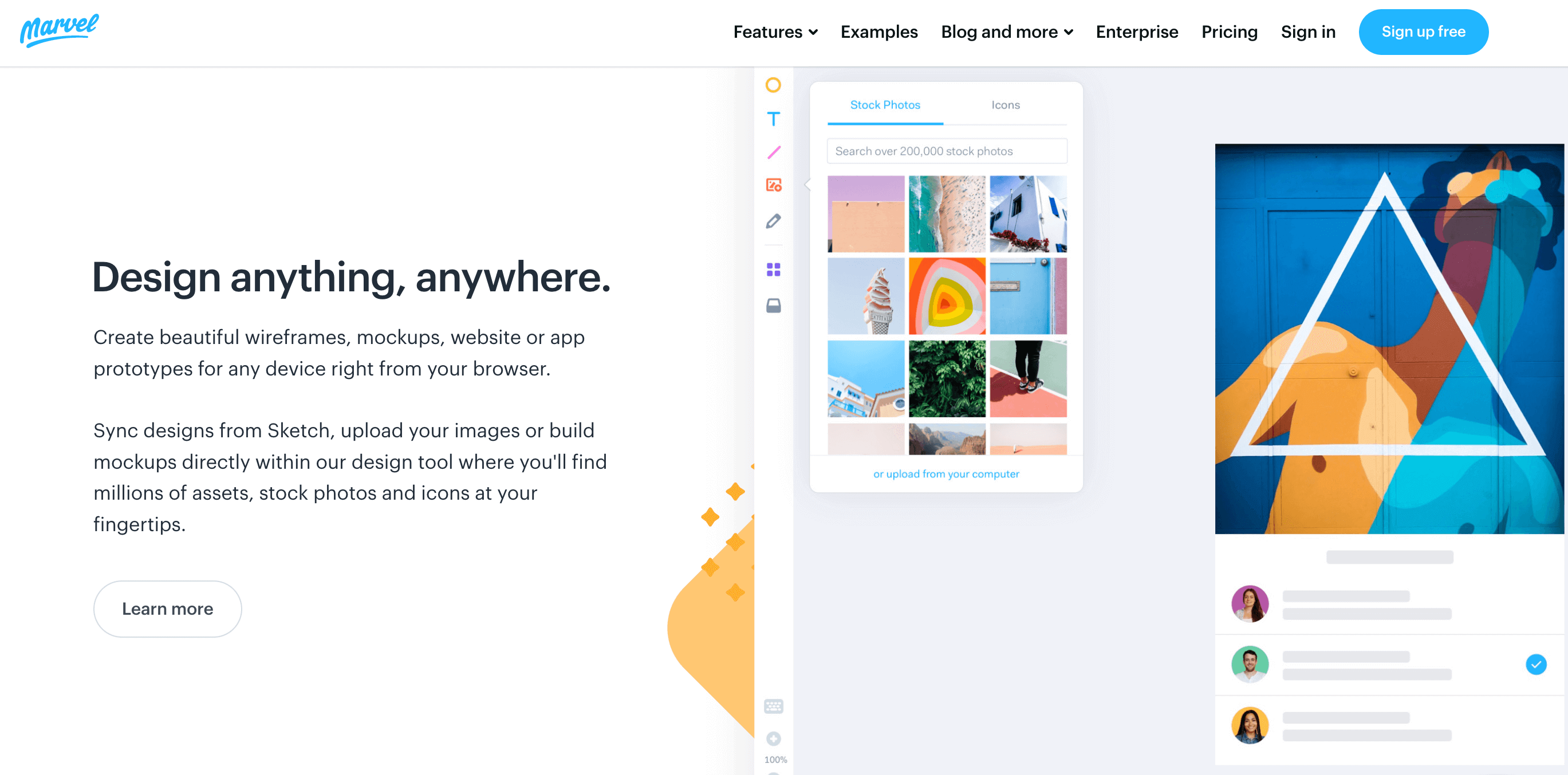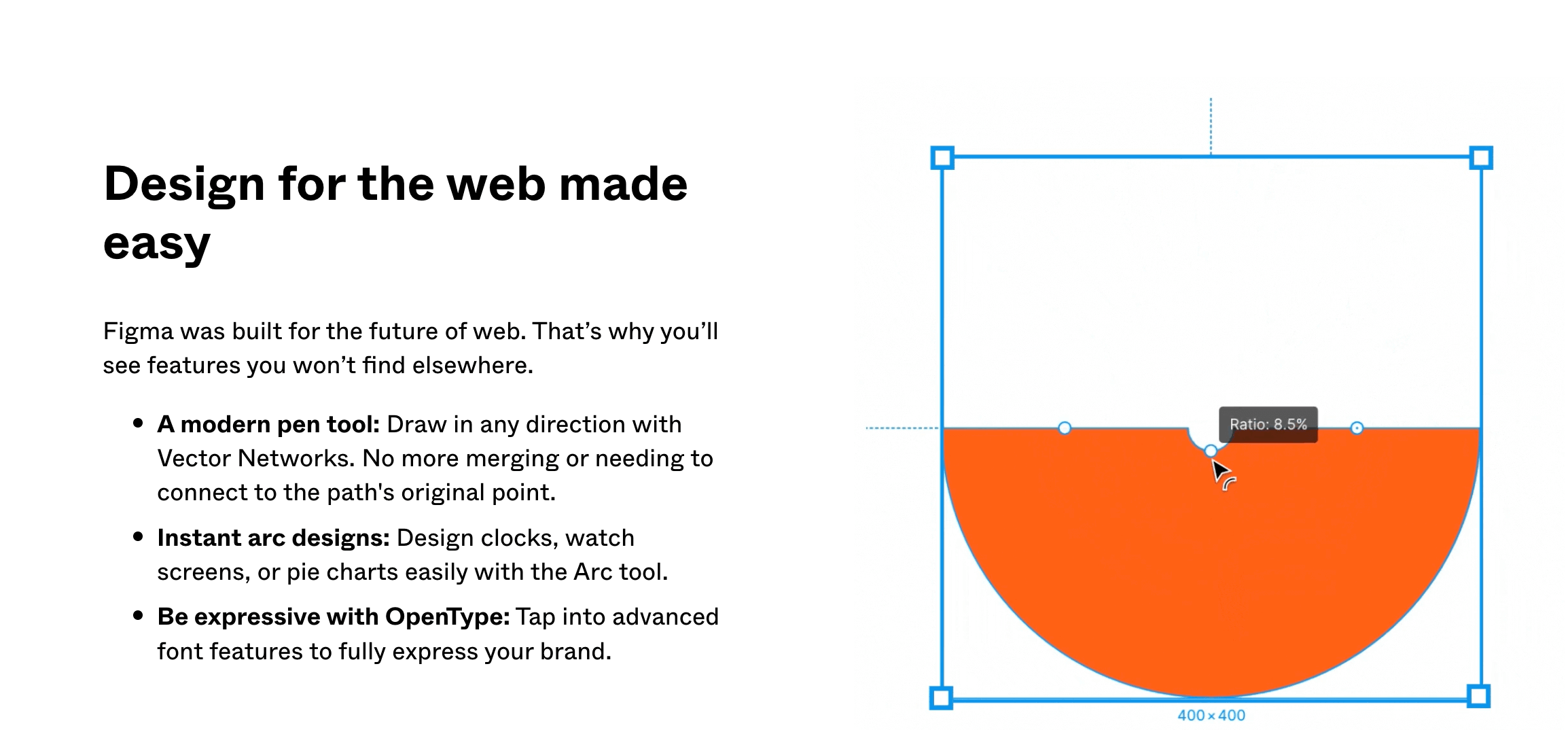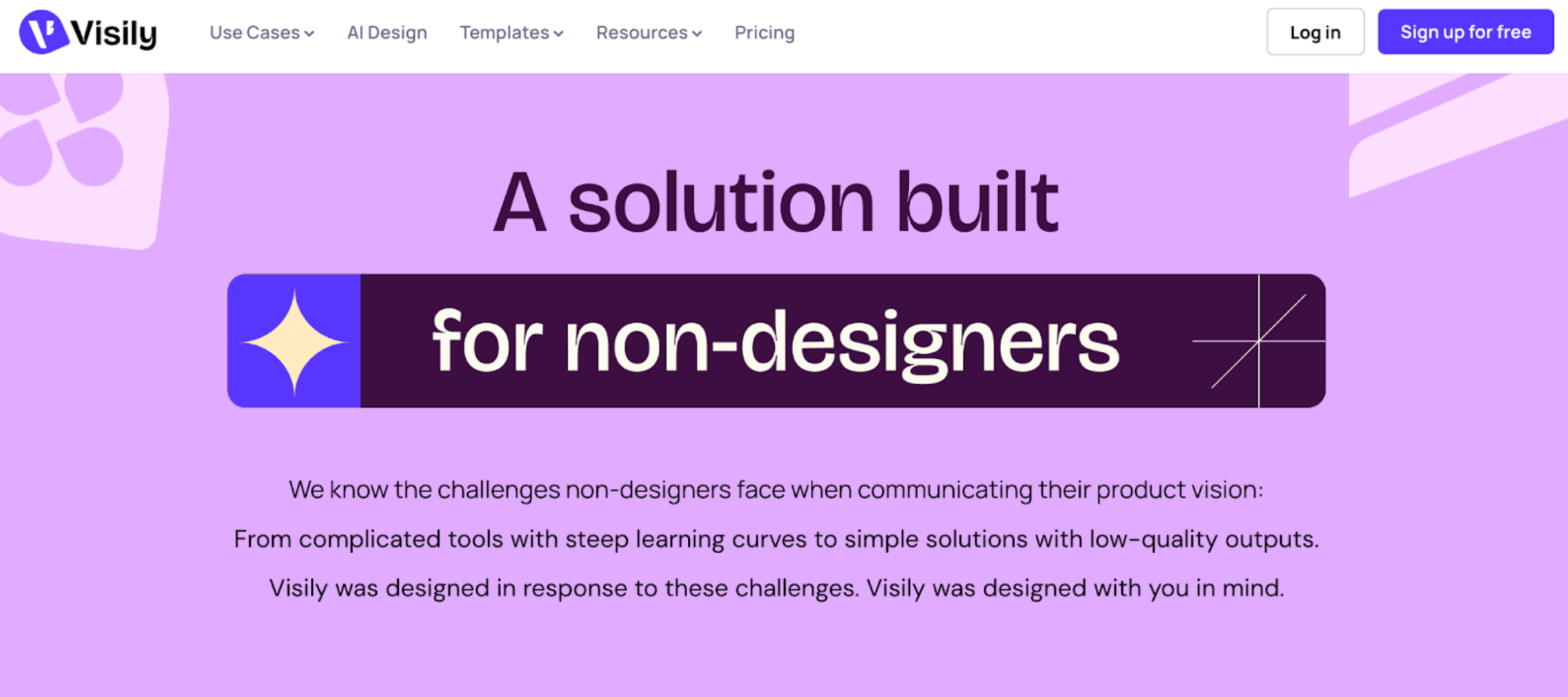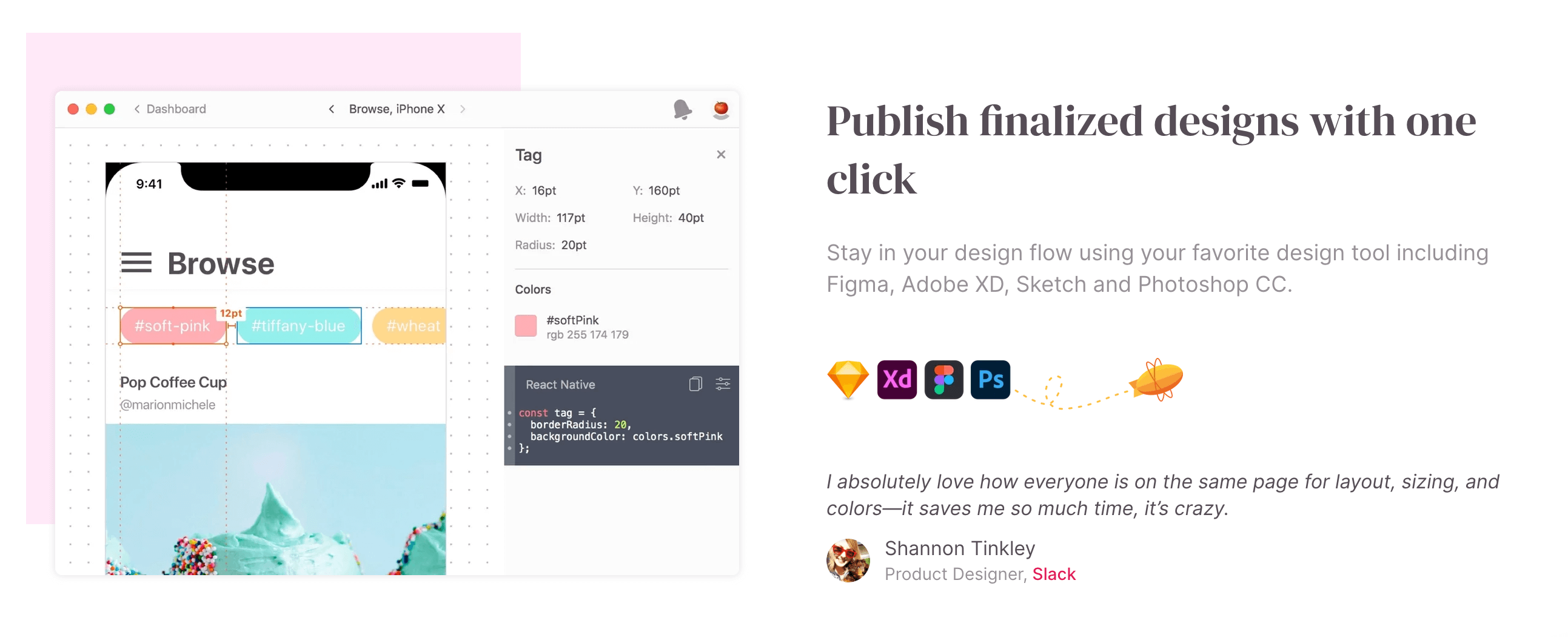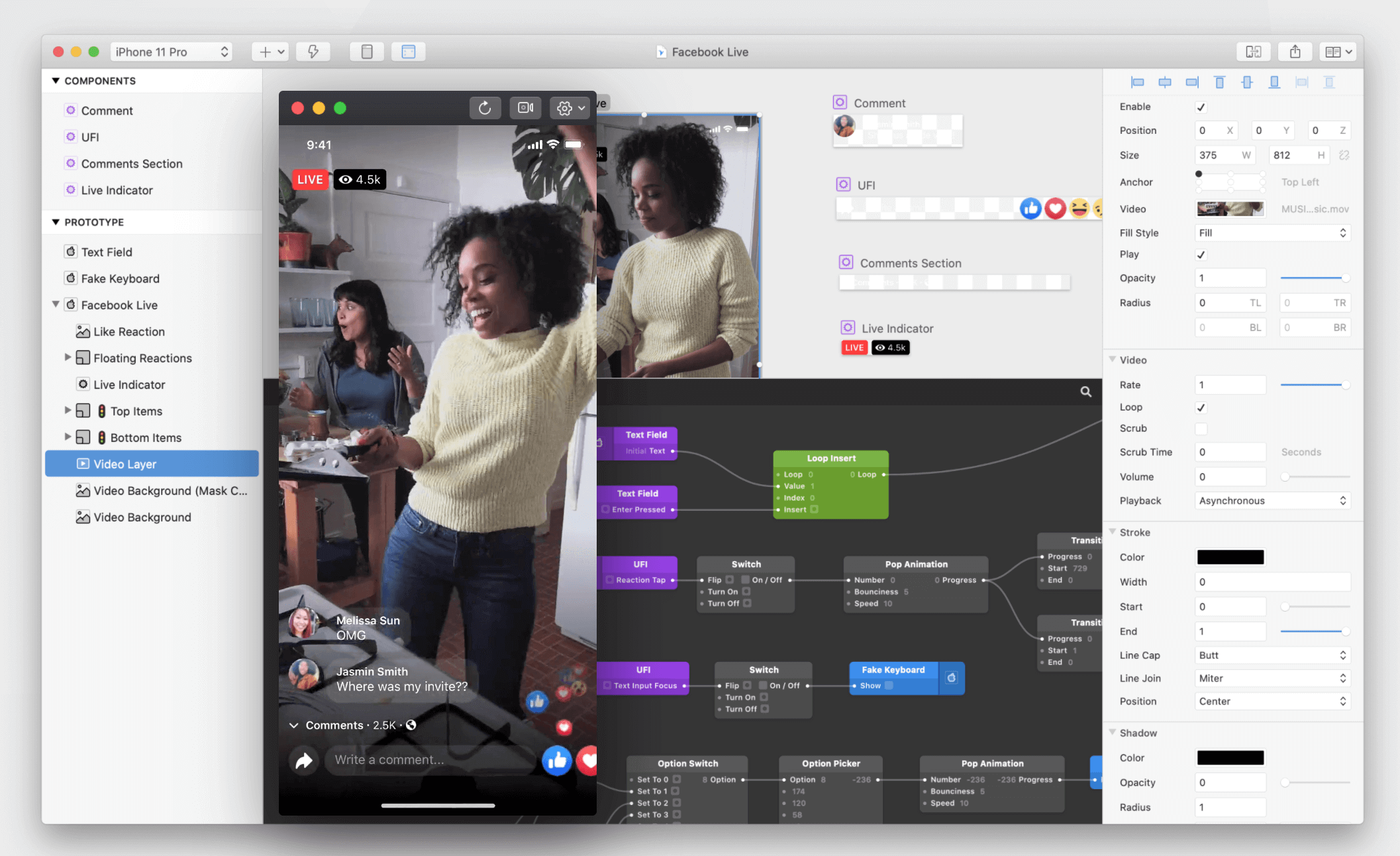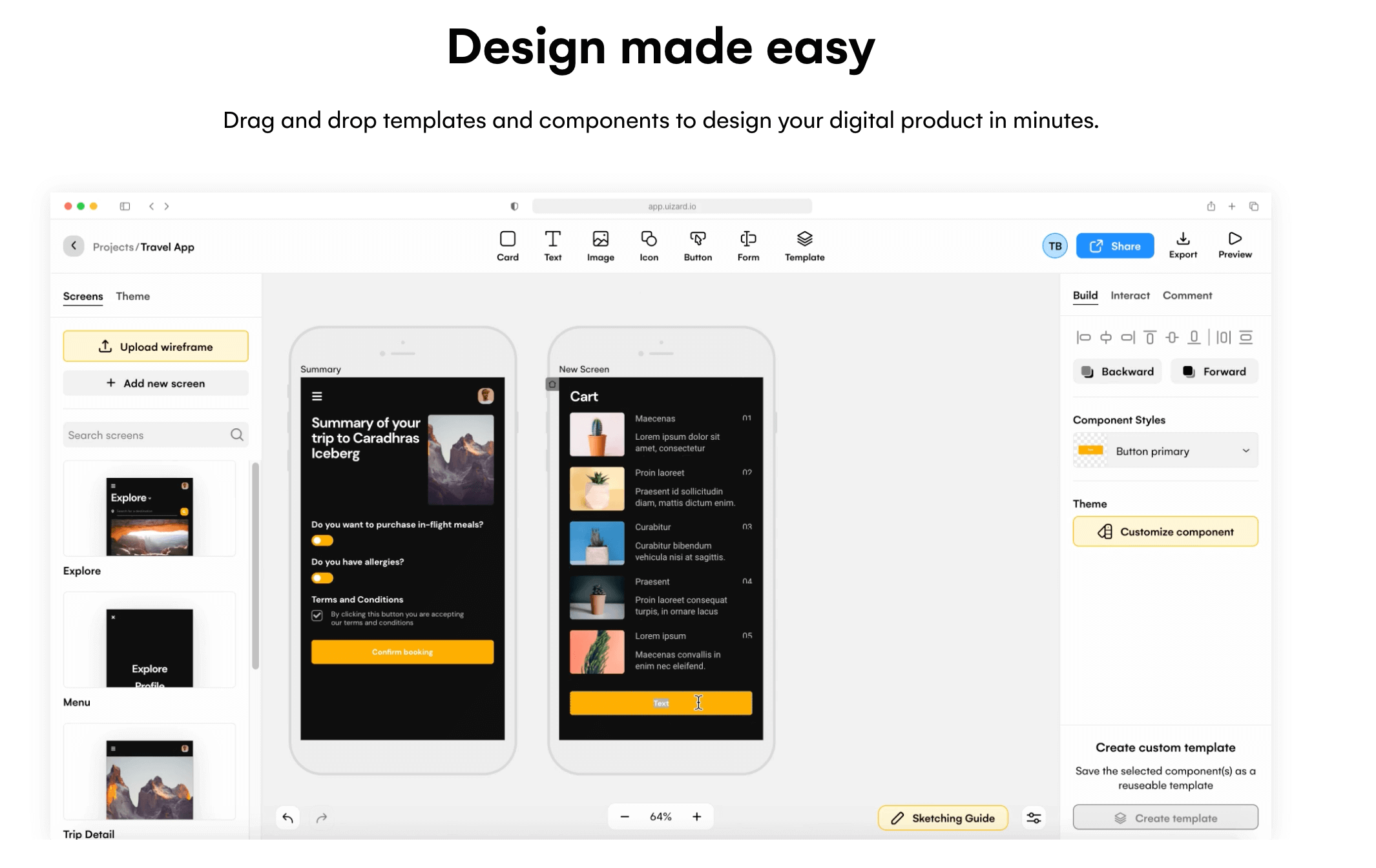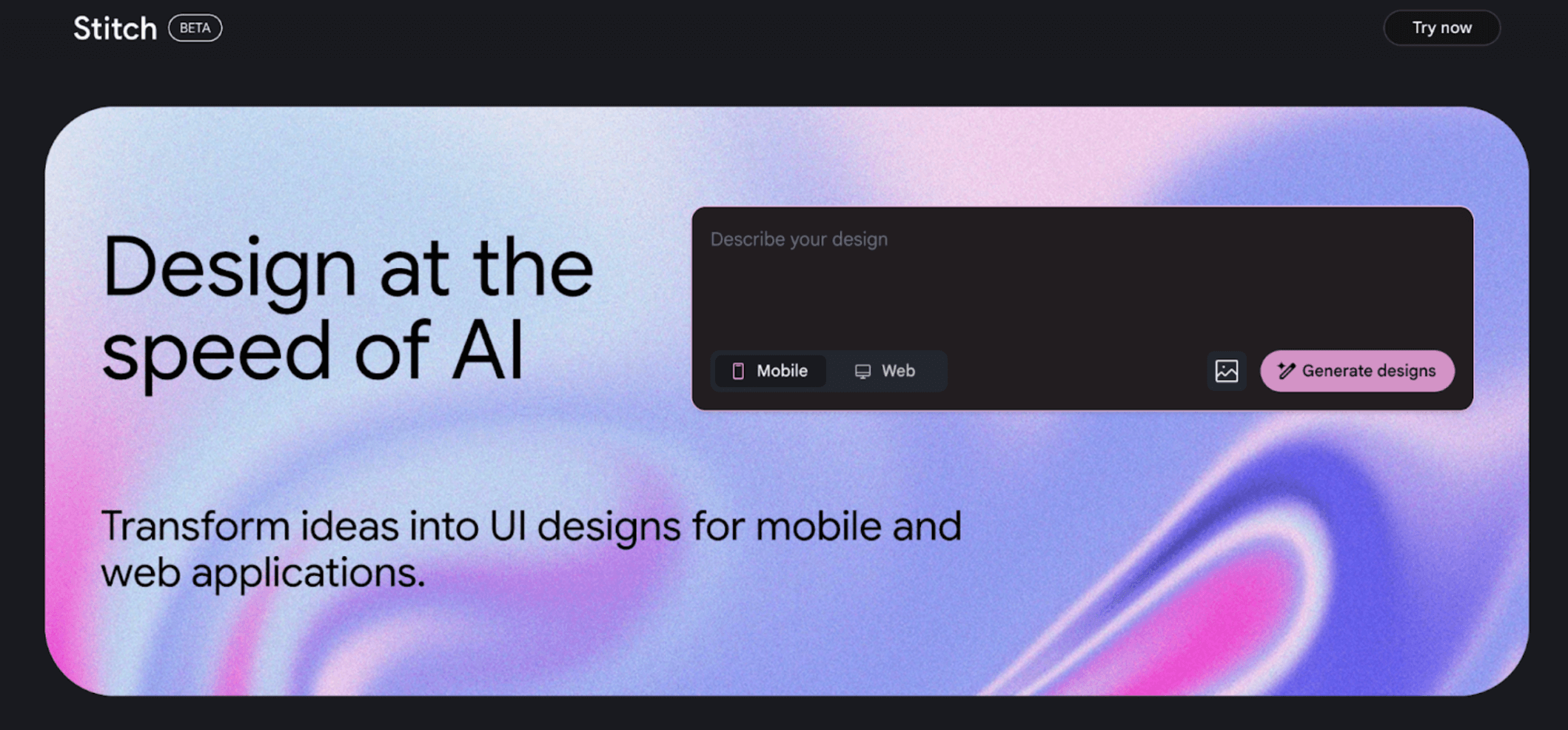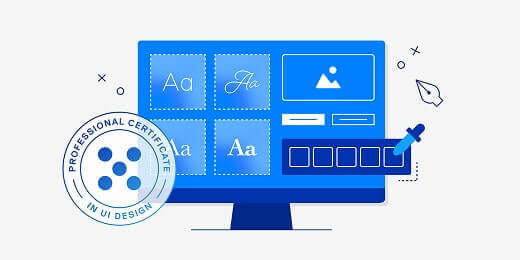User interface (UI) design focuses on the visual experience of a digital product. It encompasses all the colours, typography, and imagery you see on the screen, as well as the elements you use to navigate the interface, like buttons, scrollbars, and swiping actions.
Good UI design is essential to creating a delightful user experience. So, if you’re a digital designer of any kind, you’ll need some reliable UI design tools in your toolbox.
So what are the best UI design software tools worth trying in 2026?
Keep reading: we’ve rounded up the industry’s favourites right now, together with a summary of key features and price. Let’s dive in.
1. Sketch
Sketch is a vector graphics editor used for drawing, wireframing, prototyping and design handoff; essentially everything you need to bring your designs to life.
Sketch remains a powerful and flexible UI design platform built for collaborative work. It’s long been considered an industry-standard tool, ideal for both beginner and advanced designers. However, bear in mind that Sketch is only compatible with macOS for editing, though web-based features now make collaboration easier across platforms.
Key features:
-
- Intuitive vector editing tools and editable boolean operations for flexible and iterative design.
-
- Stacks layout system (an evolution of Smart Layout) for responsive, auto-adjusting designs (similar to Figma’s Auto Layout).
-
- Infinite design canvas with flexible Artboards, design presets, customisable grids and simple resizing tools, allowing you to scale your designs.
-
- Glass effect and enhanced blur options for modern, OS-style UI designs.
-
- Variable and OpenType fonts for infinite control over your interface typography.
-
- Improved component and library management, including the ability to replace libraries and update linked components more efficiently.
-
- Cross-platform tools for real-time collaboration available through Sketch’s web app, allowing stakeholders to view, comment, inspect, and hand off designs without needing the Mac app.
-
- Version history and cloud storage via Sketch Workspace for teams working collaboratively.
Price:
You can try Sketch free for 30 days. The standard subscription plan costs $12 per editor per month, or $120 per editor per year (equivalent to $10 per month if billed annually). This includes access to the Mac app, web app, cloud documents, and collaboration tools.
Alternatively, you can purchase a Mac-only licence for $120 per seat, which includes one year of updates and allows you to keep using the app indefinitely (without new updates after that period).
Note: Only the subscription plan includes real-time collaboration, version history, and the full web-based Workspace experience. Learn more about Sketch’s price plans here.
2. Proto.io
Proto.io is a web-based, no-code prototyping tool that allows you to create high-fidelity, interactive prototypes in record time.
Proto.io promises “prototyping for all.” Popular among designers, product managers, and marketers alike, this UI design tool is renowned for its intuitive drag-and-drop interface, virtually flat learning curve, and extensive library of ready-to-use components, templates, and digital assets. And, with the addition of more advanced features, new integrations, and an AI-powered asset generation wizard, this UI design tool continues to be a versatile favourite in the industry.
Key features:
-
- Drag-and-drop interface.
-
- 250+ UI components for iOS, Android, and web.
-
- 1,000+ fully customisable templates for web and mobile app design, including templates for onboarding, e-commerce, product sign-in, and more.
-
- 6,000+ digital assets to add to your prototypes, including static and animated icons, stock images, and sound effects.
-
- Powerful animation and interaction features to bring your prototypes to life, including screen transitions, timeline-based state animations, and advanced animation effects.
-
- Seamless integration with popular design tools such as Figma, Sketch, Adobe XD, and Photoshop.
-
- Preview and test your prototypes in real-time with the built-in preview feature.
-
- Easy export in multiple formats, including PDF, HTML, and video.
-
- AI-assisted asset generation: Proto.io now includes a built-in wizard that lets you generate or augment assets (headers, icons, art) via AI to speed up visual design.
Price:
You can try Proto.io for free with a 15-day trial. After that, you have the choice of four available paid plans: Freelancer for $24/month, Startup for $40/month, Agency for $80/month, or Corporate for $160/month.
Learn more about proto.io price plans here.
3. Adobe XD
Adobe XD is a vector-based UI and UX design tool that was once considered the go-to platform for designers looking to take their ideas from wireframes to high-fidelity prototypes, all within a single workspace.
Part of the Adobe Creative Cloud suite, Adobe XD has long been praised for its clean interface, cross-platform functionality (it works on both Windows and macOS), and powerful end-to-end workflow for ideation, design, animation, and developer handoff.
However, Adobe has since shifted its focus toward AI-powered and cloud-based design tools, particularly through Adobe Firefly, its generative AI engine. As a result, XD is no longer being actively developed with new features, and new users can only access it through the Creative Cloud All Apps (now Creative Cloud Pro) plan. Existing users will continue to receive support and security updates, but XD is effectively in maintenance mode. Still, we’re keeping it on our list as it remains a core tool in the industry.
Key features:
-
- Vector-based drag-and-drop editor tool with unlimited artboards and smart guides that help you to align different objects and elements in your designs.
-
- UI kits (i.e. ready-made components) for Apple Design, Google Material Design, Amazon Alexa, and more.
-
- 3D Transforms, allowing you to simulate object depth and perspective in your designs.
-
- Components and states for iterative and scalable design. Components work intuitively to instantly push changes across entire designs or documents, sparing you the work of manually duplicating and implementing changes.
-
- Powerful animation functionality, including video and Lottie playback, micro-animations and motion effects, scroll groups and anchor links.
-
- Voice prototyping, enabling you to create voice commands, build in speech playback, and integrate voice-enabled features.
-
- Design Specs feature to streamline the handoff process, allowing you to share interactive prototypes, CSS code snippets and downloadable assets with developers, all via one link.
What’s new? Adobe’s increasing focus on AI
While XD itself is no longer receiving major updates, Adobe is investing heavily in AI-assisted creativity through Firefly. Firefly’s generative features, such as AI image creation, text effects, and automatic vector generation, are being integrated across apps like Photoshop, Illustrator, and Express, gradually shaping a new, more intelligent design workflow within the Adobe ecosystem.
Although XD doesn’t yet include Firefly features directly, future UI workflows in Adobe’s ecosystem are expected to lean more on AI-augmented tools that streamline design ideation, prototyping, and asset creation.
Price:
Adobe XD is no longer available as a standalone product. New users can access it only through the Creative Cloud All Apps / Pro plan, which includes 20+ Adobe applications and Firefly generative credits. Pricing starts at around $59.99/month. Existing standalone users will continue to receive ongoing support and maintenance updates.
4. UXPin
UXPin is a popular UX and UI design tool, used by both new and seasoned designers alike. UXPin is another end-to-end platform capable of delivering polished, interactive prototypes, no coding skills required.
If you’re already familiar with Sketch or Photoshop, you’ll find the UXPin interface fairly easy to navigate. Not only does it come with thousands of ready-to-use design components; it’s also well-equipped to help you create and manage solid design systems.
UXPin works with Mac and Windows, or in the browser. And, like many UI design tools now, UXPin comes with a host of handy AI-powered features to speed up the design process.
Key features:
-
- Built-in libraries for iOS, Google Material Design, Bootstrap and User Flows, full of ready-to-use interactive elements, colours, text styles and icons.
-
- Interactive components that you can drag into your designs to create high-fidelity interactions.
-
- Embedded user flow capabilities to help you tell the story of your work.
-
- Built-in contrast checker and colour blindness simulator to help you ensure your designs are as accessible and inclusive as possible (especially useful now with ever-tightening legal requirements around accessible design, like the European Accessibility Act).
-
- Streamlined developer handoff with downloadable design specs.
-
- Merge AI: A built-in AI-powered component generator for even faster design and prototyping.
-
- Improved version control and collaboration: role-based permissions, project archiving, version history (with retention depending on plan).
Price:
You can use the limited version of UXPin for free for up to 2 prototypes. For enhanced functionality, you can upgrade to the Essentials plan for $6/editor per month, the Advanced plan for $29/editor per month, the Merge AI plan for $39/editor per month, or the Company plan for $119/editor per month.
You can compare all price plans and features here.
5. Marvel
Marvel promises all the core functionality you need to design and build digital products, including wireframing, prototyping, and design specs for handoff. And, with its user-friendly and intuitive platform, it continues to be a strong choice for beginners and teams looking for fast iteration.
Marvel is a web-based tool that works in the browser, so you don’t need to download or install anything. It has been built for simple, fast design, with features for wireframing, UI design, and prototyping. Marvel also integrates with many other popular design tools to help you power up your workflow.
Key features:
-
- Drag-and-drop wireframe templates for quick, early-stage designs.
-
- A vast collection of pre-made assets, images and icons to help you visualise your ideas.
-
- Option to import static designs from other tools (e.g. Sketch), with improved sync for artboards and hotspots.
-
- Interactive prototyping with hotspots, interactions and layers. You can learn more about how to use Marvel for prototyping (and about other prototyping tools) in this guide.
-
- Built-in user testing functionality to get feedback on your ideas and validate your designs.
-
- Design handoff tool to instantly turn designs into code, specs and assets for developers to use.
-
- Integrations for Jira, Maze, Confluence, Lookback, and more.
-
- Offline prototype viewing and downloads for demos without internet.
Price:
You can use Marvel for free to create 1 project. For unlimited projects and multiple users, consider the Pro plan for €9/month (1 user) or the Team plan for €27/month (3+ users).
Learn more about Marvel’s price plans here.
6. Figma
You’ll struggle to find a UX/UI design tools list that doesn’t mention Figma, and for good reason. Figma is a browser-based interface design tool that empowers fast design and prototyping and a smooth, collaborative workflow.
Just like Sketch and Adobe XD, Figma is a vector graphics editor. Figma is ideal if you’re looking for an all-in-one tool to cover everything from ideation to interactive prototyping, wrapped up in a delightfully intuitive interface.
And, if you do give Figma a go, be sure to try out FigJam too, Figma’s online whiteboard tool for collaborative ideation, brainstorming and workshops.
Key features:
-
- Modern pen tool which allows you to draw in any direction with Vector Networks, now enhanced with Figma Draw for expressive brushes, textures, and real-time stroke effects.
-
- Auto Layout for easy responsive design, now with AI-assisted layout suggestions for faster design iterations.
-
- Flexible Styles which you can apply across all your UI design software projects, now with AI-powered style recommendations to maintain consistency across your designs.
-
- Accessible libraries with ready-made assets which you can drag and drop into your design files.
-
- Code snippets for CSS, iOS, and Android, ensuring easy developer handoff, now enhanced with Code Connect, allowing coding agents like Copilot or Claude Code to access exact design data.
-
- Plugins to automate and augment your design work, including a vast array of AI-assisted plugins for rapid prototyping and design tasks. Check out the best Figma AI plugins here.
-
- Interactive prototyping features including advanced transitions, dynamic overlays and animated GIFs, now enhanced with Figma Make to generate functional prototypes or web apps from prompts, screenshots, or designs.
-
- Embedded commenting functionality for a collaborative design process.
-
- New AI functionality enables you to auto-generate boards and diagrams in FigJam, to generate responsive design components, and to interact with Jambot (FigJam’s conversational AI, similar to ChatGPT). You can learn more about Figma’s AI capabilities here.
-
- Figma Sites, a new feature that enables you to build and publish real, responsive websites directly from your design files, now with smart blocks and AI-assisted content prompts.
-
- Figma Buzz, another new feature that allows you to create and manage marketing content collaboratively, helping teams bridge design and marketing workflows.
Price:
Figma offers a free Starter plan with up to three Figma and FigJam files, unlimited collaborators, and limited AI credits, ideal for individuals or small teams exploring the platform. For full functionality, paid plans start with the Professional plan, priced at around €16 per full seat per month (or €12 for Dev Mode only), which includes unlimited projects, team libraries, and 3,000 monthly AI credits. Larger teams can upgrade to the Organization plan (from €55 per full seat per month) or the Enterprise plan (from €90 per full seat per month), which add advanced admin controls, expanded AI credits, and enterprise-grade security features.
Figma also offers flexible “seat types,” including collaboration-only, developer, and content seats, so teams only pay for the access each member needs. All plans include access to Figma’s growing AI tools (like Figma Make and Figma Sites) and its integrated ecosystem of design, dev, and marketing features.
All Figma pricing plans and features can be found here.
7. Visily
Visily is a web-based, AI-powered UI/UX design and prototyping tool built for individuals and teams who want to work fast, even without extensive design experience. Visily is especially popular for its intuitive drag-and-drop interface and AI magic. You can quickly turn text prompts, screenshots, sketches, or templates into high-fidelity designs, ideal if you want to prototype fast without a steep learning curve.
Key features:
-
- Intuitive drag-and-drop editor: Build and adjust layouts easily with a flexible canvas that lets you move, resize, and restyle elements however you like.
-
- Text-to-UI generation: Type a short description of your idea and Visily’s AI instantly turns it into an editable wireframe you can refine and expand.
-
- Screenshot-to-UI conversion: Upload a screenshot or reference design and Visily transforms it into a working layout you can tweak and prototype from.
-
- Instant restyling: Apply new colours, fonts, and visual themes to entire screens in one click (perfect for testing branding or visual directions quickly).
-
- AI-powered flow mapping: Chat about your idea with Visily AI, and it automatically creates a structured diagram or user flow to visualise your logic.
- Smart layout expansion: Use natural language to add new sections, pages, or interface components to an existing design.
- 1,500+ ready-made templates: Choose from a vast library of customisable templates for mobile apps, websites, dashboards, and more.
-
- Easy handoff: Export screens, components, or CSS snippets for smooth transition from design to development.
Price:
Visily offers a free Starter plan that gives you access to core features, with some limits. You can upgrade to the Pro plan for $11 per editor per month, the Business plan for $29 per editor per month, or discuss a custom enterprise plan. Learn more about Visily’s price plans here.
8. Zeplin
Zeplin is a cloud-based software that bridges the gap between UX/UI designers and front-end developers. It provides an organised workspace to publish your designs and generate specs, assets and code snippets for a smooth developer handoff.
UX and UI designers work in close collaboration with developers, the people who code your designs into real, functioning websites and apps. As such, it’s essential to provide developers with the technical specs they need to develop your designs exactly as you envision them.
Zeplin takes care of that whole process: you simply publish your finished designs in the platform and select what platform you’re designing for (e.g. web, iOS, or Android) to generate the necessary assets.
Key features:
-
- Flows to quickly and easily map user journeys and document your designs.
-
- Global Styleguides to organise and update your design system colours, text styles and components in a centralised location.
-
- Integrations with Figma, Adobe XD, Sketch, Photoshop, Slack, and more.
-
- Extensions for HTML, CSS, Swift, XML, React Native, and more.
-
- AI Organize (Beta): Automatically groups and arranges your screens based on structure and naming, saving time and ensuring consistent documentation.
-
- AI Design Review (Beta): Scans your project for layout inconsistencies, missing tokens, and visual mismatches before developer handoff.
-
- MCP Server for AI agents: Connect AI coding assistants (like GitHub Copilot or Cursor) to automatically generate or edit code from Zeplin design specs.
-
- New export formats and code options: Export assets in modern formats (like AVIF) and generate production-ready snippets for HTML, CSS, Swift, Android XML, React Native, and Tailwind CSS.
Price:
Zeplin offers two price models: Pay per project, or pay per seat. With the project-based model, you can create one project for free or subscribe to the Basic plan, starting at $13.75 per month (increases with the number of projects). Alternatively, pay $12 per seat per month with the Advanced plan, which includes 50 projects. You’ll find all Zeplin pricing information here.
9. Origami Studio
Origami Studio is a free UI design software tool created by Meta (formerly Facebook). It’s primarily a prototyping tool, enabling designers to rapidly build and share interactive interfaces.
Originally built for designers at Facebook, Origami Studio is now available for free for macOS users. It’s a sophisticated UI tool with a relatively steep learning curve, so we wouldn’t recommend it as your first UX/UI design tool. But, for advanced designers looking to create life-like prototypes, it’s well worth your consideration.
Key features:
-
- Import from Figma and Sketch: Bring in your existing designs and enhance them with motion and interactivity.
-
- Drag-and-drop Canvas: Design, arrange, and edit shape layers, text, and images in a flexible workspace.
-
- Patch Editor: Add dynamic interactions and animations using visual logic blocks called patches, no coding required.
-
- Viewer Panel: Preview, test, and record your prototypes for sharing and presentations.
-
- Patch Library: Access an extensive library of built-in patches to control animation, logic, and data flow.
-
- Collaboration and sharing: Share prototypes via Origami Live, a companion iOS app, to test interactions directly on mobile devices.
-
- Updated integrations: Now supports live Figma syncing and improved export options for CSS, iOS, and Android developers.
Price:
Origami Studio is completely free to download and use.
10. Uizard
Uizard is an AI-powered UI design platform for those who want to create digital products but don’t necessarily have advanced design expertise. Whether you’re a startup founder, marketer, or product manager, Uizard simplifies the design process, enabling rapid prototyping and collaboration.
This is a comprehensive UX and UI design tool encompassing ideation, low-fidelity wireframing, rapid prototyping, UI styling, and real-time collaboration. Uizard also boasts a powerful range of AI features and functionality, meaning that creating and communicating your design concepts has never been easier or faster.
Uizard stands out for its extremely low learning curve: according to their website, if you can use Google Slides, Keynote, or Powerpoint, you can use Uizard with ease!
Key features:
-
- Drag-and-drop components and templates for quick mobile and web design.
-
- AutoDesigner 2.0: This is Uizard’s flagship AI feature. It transforms rough sketches, wireframes, or text prompts into fully designed, editable screens, automatically suggesting layouts, colours, typography, and component placement for fast, professional-quality results.
-
- Wireframe mode which allows you to render your project in low-fidelity, ideal for taking a step back and considering the user experience of your product.
-
- Ability to import both hand-drawn paper wireframes and wireframes created using other tools. Uizard will transform your imported wireframes into customisable digital screens.
-
- AI-powered Design Assistant: Enter simple text prompts to auto-generate editable, multiscreen designs.
-
- Screenshot Scanner: Use the power of AI to turn screenshots into fully editable mockups.
-
- Wireframe Scanner: an AI-powered feature that turns hand-drawn wireframes into digital, editable mockups.
Price:
With the Uizard free plan, you can create 2 projects and up to 3 AI generations per month, with unlimited free viewers and commenters. For more projects, upgrade to the Pro plan for $12 per month (includes access to all templates and up to 100 projects and 500 AI generations) or the Business plan for $39/creator per month (includes unlimited access to all Uizard features). You’ll find a complete pricing and features overview here.
11. Google Stitch (Currently in Beta)
Google Stitch is an experimental AI-powered UI design tool currently in beta, developed by Google Labs. It enables users to transform simple text descriptions or visual inputs (like sketches or screenshots) into fully designed user interfaces complete with front-end code.
Designed to bridge the gap between design and development, Stitch leverages Google’s Gemini 2.5 Pro models to streamline the creation of mobile and web app UIs. Free to use, Stitch is a promising newcomer for rapid prototyping. Watch this space.
Key features:
-
- Text-to-UI generation: Enter a descriptive prompt and Stitch generates a corresponding UI layout.
-
- Web-based platform: No installation required; access the tool directly with your Google account.
-
- Sketch-to-UI conversion: Upload hand-drawn wireframes or screenshots and Stitch translates them into structured, editable designs.
-
- Design customisation: Modify themes, colours, fonts, and layout properties directly within the platform to align with brand guidelines.
-
- Multiple design variants: Generate different UI styles and layouts to explore various design possibilities.
-
- Figma integration: Copy generated designs directly into Figma for further refinement and collaboration.
-
- Front-end code export: Obtain clean HTML/CSS code snippets for the generated UI, facilitating seamless development handoff.
Price:
Google Stitch is currently free to use; all you need is a Google account. Note that the tool is still in beta mode, so pricing may change.
What other tools do designers need in their toolbox?
We’ve rounded up the best UI design tools on the market right now, but UI design is just one aspect of the product design process. Although many of the UI design tools we’ve listed here serve as end-to-end design platforms, there are many more tools out there dedicated to specific tasks and stages of the design workflow.
And, with the rise of AI, many new tools are emerging to streamline and automate certain aspects of the product design process. If you’d like to learn more about the impact of AI on the design industry, check out these posts:
- Will AI replace UX designers?
- The top AI tools for UX design
- 5 AI-powered tools for user research (and how to use them)
For more tool recommendations, take a look at the following guides:
- Your complete guide to the best UX design tools
- The 9 best UX research tools
- The top 10 wireframe tools (and their pros and cons)
Looking for a more comprehensive education in UI design? Check out the Professional Certificate in UI Design. Over the course of 3 months, you’ll learn the end-to-end UI design process and get a hands-on introduction to the most important industry tools.
|



